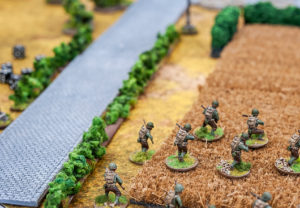Fifty-five years ago, U.S. Air Force fighter pilot and military strategist John Boyd invented the OODA Loop. This strategy of decision-making outlined how airmen should react in a rapidly shifting environment, even when the situation is shrouded with uncertainty.
In a way, Boyd’s OODA Loop is a full blown philosophy. You can get into the nitty gritty of ‘The Tao of Boyd’ in this in-depth article at The Art of Manliness. We’ll cover the basics to get you started.
Step 1: Observe
The ability to calmly observe your surroundings and remember specific details will pay huge dividends in an emergency. The best way to hone your observation skills is to test yourself as you go about your daily tasks. Here are some easy ways to get started:
– Take note of the exits every time you enter a new building.
– Memorize the most unusual characteristics of people you meet, like an interesting necklace, tattoo, hair style or graphic t-shirt.
– After leaving a building or finishing an errand, try to recall these facts and see how much you remember.
The problem with observation is that you have to judge which information is important. This is where the next step comes in.
Step 2: Orient
Boyd writes that you must orient yourself towards a ‘baseline’ of what is normal in every situation and environment. This will help you pinpoint was is not normal.
When you are observing, look for behaviors that fall short of your baseline to determine red flags. For example, subway passengers tend to keep to themselves, lounge comfortably and zone out during their trip. If you see see a subway passenger who is bothering strangers, looks agitated or is hyper-focused, they might be worth noting. Another example might be an unattended bag at the subway stop.
You should always be orienting yourself to new situations. That’s the only way you can use your observations to make good decisions.
Step 3: Decide
If you’ve oriented yourself in an environment and have noticed several worrying details, you must plan how you will defuse the situation.
This step is a judgement call. No matter how many details you notice or what observations you make, you will not have enough information to make a foolproof decision. You have to make your best educated guess about the situation before moving forward.
Step 4: Act
Finally, this is where you put your observations, orientation and decision to use.
It’s worth nothing that Steps 3 and 4 are alternatively titled ‘Hypothesis’ and ‘Test.’ This is so you can apply the OODA Loop to business and military strategy. After observing and orienting yourself to a situation, you can form and test a hypothesis. If it fails, you go back to the beginning and try again. If it succeeds, you take the win.




































